Luminous flux
Light metric derived from the effect of radiation on a standard luminosity observer.
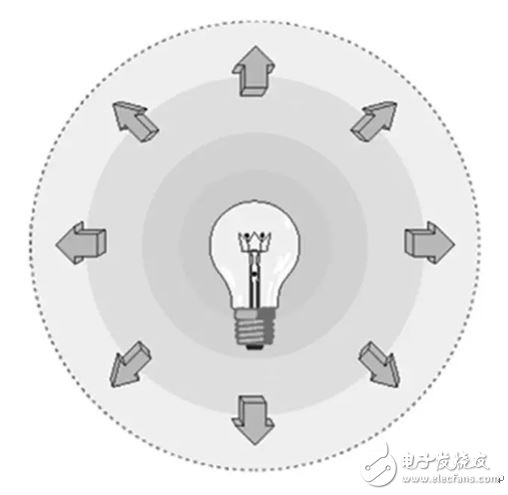
The unit is lumens (lm), 1lm=1cd/1sr. For Ming Vision there are:

In the formula:
dΦe(λ)/dλ--the spectral distribution of the radiant flux;
ν(λ)--spectral light (visual) efficiency;
Km - The maximum value of the spectral (visual) performance of radiation in lumens per watt (lm/W). In the case of monochromatic radiation, the Km value under bright visual conditions is 683 lm/W (when λm = 555 nm).
2. Luminous intensity
The luminous intensity of the illuminant in a given direction is the quotient of the luminous flux dΦ transmitted by the illuminant in the solid angle element dΩ in that direction divided by the solid angle element, that is, the luminous flux per unit solid angle.
The unit is Candela (cd), lcd = 1 lm / sr.


3. Brightness luminance
Luminance refers to a physical quantity in which the surface of the illuminant (reflector) is bright (reflective). The human eye observes the light source from one direction. The ratio of the light intensity in this direction to the area of ​​the light source "visible" by the human eye is defined as the brightness of the light source unit, that is, the luminous intensity per unit projected area.
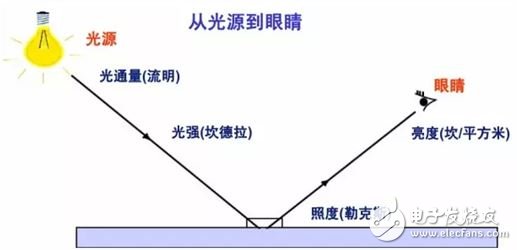
The amount defined by the formula L = d2 Φ / (dA · cos θ · d Ω), the unit is candela per square meter (cd / m2).
In the formula:
dΦ--the luminous flux (lm) transmitted by a beam element at a given point and containing a solid angle dΩ in a given direction;
dA--including the beam cross-sectional area (m2) at a given point;
Θ—the angle between the normal of the beam section and the beam direction.
4. Illuminance illuminance
A physical quantity indicating the brightness of the illuminated surface. The illuminance at a point on the surface is defined as the ratio of the luminous flux incident on the bin on this point to the area of ​​the bin. In numerical terms, it is equal to the luminous flux projected over a unit area.
The quotient of the luminous flux dΦ incident on the bin containing the point divided by the bin area dA, in lux (lx), 1 lx = 1 lx/m2.
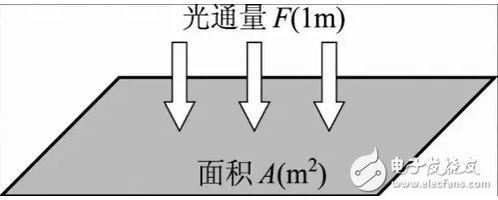
5. Average illumination average illuminance
Specifies the average of the illuminance at each point on the surface.
Average illuminance (Eav) = total luminous flux of the source (N*Ф) * utilization factor (CU) * maintenance factor (MF) / area (m2) (for indoor or stadium lighting calculations)
6. Maintain average illuminance maintained average illuminance
The average illuminance on the specified surface shall not be lower than this value. It is the average illuminance on a defined surface at the moment the luminaire must be maintained.
7. Maintenance factor maintenance factor
The ratio of the average illuminance or average brightness of the illuminating device on a given surface after a certain period of use, compared to the average illuminance or average brightness obtained on the same surface when the device is newly installed under the same conditions.
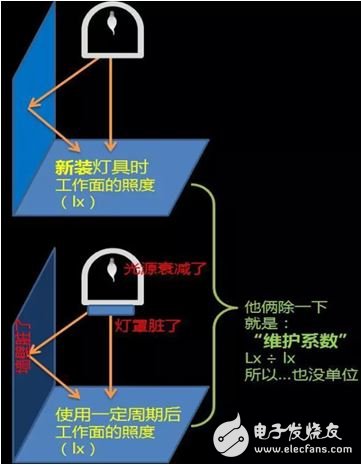
8. Light intensity distribution distribuTIon of luminous intensity
The curve or table is used to indicate the luminous intensity value of the light source or the luminaire in all directions of the space, also called light distribution.
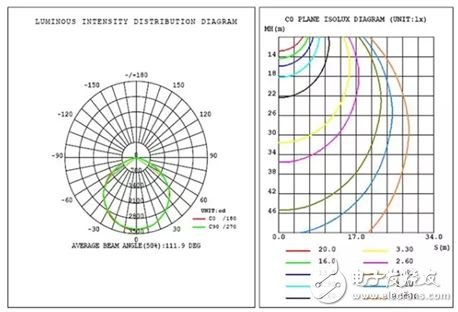
9. Luminous efficacy of a light source
The luminosity obtained by dividing the luminous flux emitted by the light source by the power of the light source is referred to as the luminous efficacy of the light source. The unit is lumens per watt (lm/W).

10. Luminaire efficiency luminaire efficiency
Under the specified conditions of use, the ratio of the total luminous flux emitted by the luminaire to the total luminous flux emitted by all sources within the luminaire, also known as the luminaire's optical output ratio.
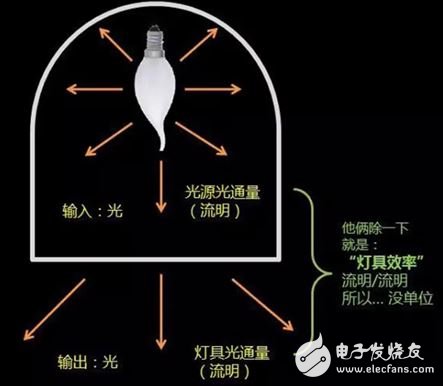
11. Luminaire efficacy
The ratio of the total luminous flux emitted by the luminaire to the power it inputs under the specified conditions of use. The unit is lumens per watt (lm/W).

12. Luminous flux maintenance
The ratio of the luminous flux of a light source to its initial luminous flux after a given ignition time.

13. Reflectance ratio reflectance
The ratio of the reflected radiant flux or luminous flux to the incident radiant flux or luminous flux given the spectral composition, polarization state, and geometric distribution of the incident radiation.
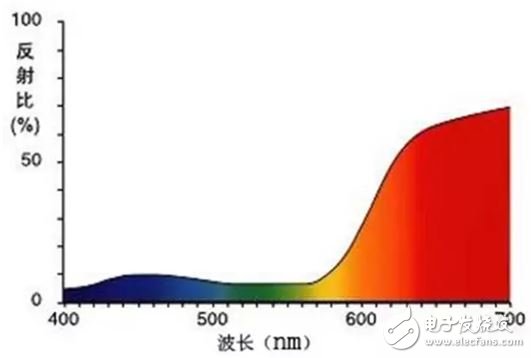
14. Lighting power density lighTIng power density (LPD)
Installation power for general lighting per unit area (including auxiliary power devices such as light sources, ballasts or transformers) in watts per square meter (W/m2).
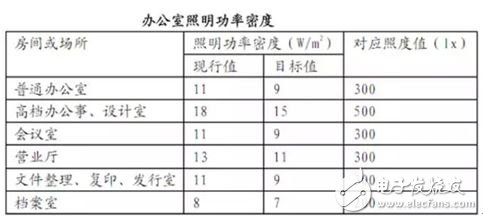
15. Room index room
A value indicating the geometry of a room or place, the value of which is twice the room or site area and the difference between the perimeter of the room or site and the difference between the height of the fixture and the height of the face.

16. Annual exposure annual lighTIng exposure
The value of the cumulative illuminance of the object is measured by the product of the illuminance received by the object and the annual cumulative hour, expressed in lux hours per year (lx·h/a).
Flat Linear High Bay Light 160W
2X4FT Flat Linear Highbay Light,130Lm/W Flat High Bay Lighting,Warehouse Flat Linear High Bay Light,High Brightness Linear High Bay Light
Vietnam JJ Lighting Company , https://www.vnjjlighting.com